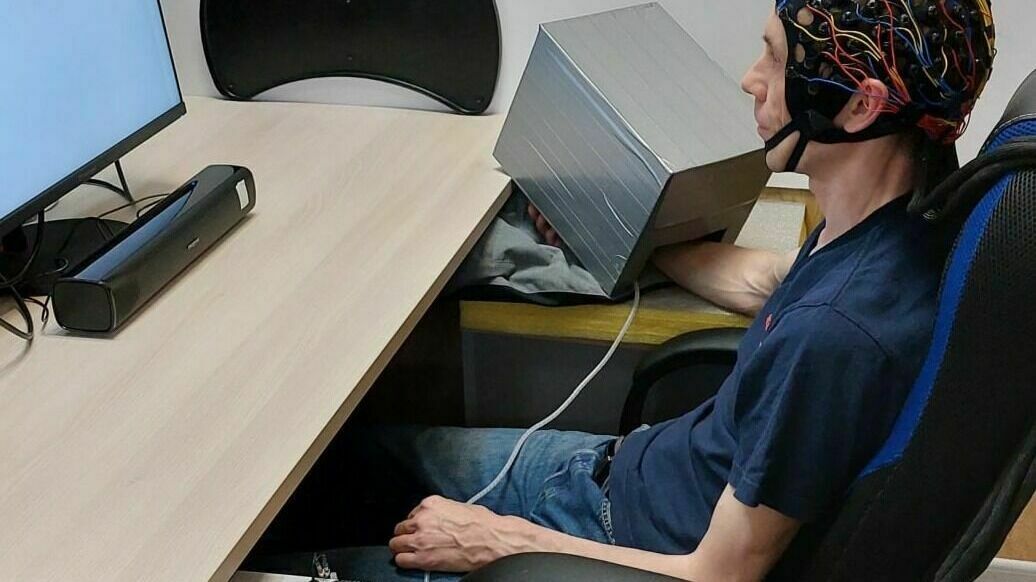
It's better to try than to imagine: an approach to managing the brain-computer interface has been found
Ivan Zubov
This approach requires long training and is quite complex, and therefore, as an alternative, neurophysiologists have proposed using quasi—movements - such weak attempts at movement that they can only be detected with the help of an EEG, while the signal will still be stronger than with imagination.
A computer can process such commands more accurately, but for a person they are more natural and easier to learn. The authors of the work plan to launch the brain-computer interface (BCI), controlled by quasi-movements, as soon as possible. The results of the work supported by a grant from the Russian Science Foundation (RNF) are covered in the Life magazine and on the PsyArXiv website.
Salvation is in quasi–movements!
Quasi—movements are an unusual and extremely poorly studied motor phenomenon.
It is observed when an experimental participant is asked to perform a movement, gradually reducing its amplitude until not only the visible movement disappears, but also the activation of the muscle responsible for it. These weak attempts are called quasi-movements. Their reflection can still be seen on the electroencephalogram (EEG): a cap with electrodes is put on the subject's head, which detects changes in the electrical activity of the brain, and a special program translates these signals into graphs. Something similar can be observed when a person with a paralyzed or missing limb tries to move it.
Scientists from the Moscow State Psychological and Pedagogical University (MGPPU, Moscow) conducted an experiment in which 23 young volunteers compared quasi-movements with imaginary and real movement. The researchers first trained them in thumb retraction in reality, in imagination and in quasi-motion, and then recorded the work of their brain using electroencephalography. After the experiment, a survey was conducted to find out what the volunteers were thinking during the tasks.
According to the subjective feelings of the subjects, the intention to make a quasi-movement practically did not differ from the intention to perform a real movement. On the EEG, brain activity during quasi-movement turned out to be higher than when imagining movements, although the latter were of large amplitude. The authors suggested that this is somehow due to the fact that attempts to perform quasi-movements from time to time lead to a slight muscle tension unnoticeable to the experimenter. Maybe the subject feels it and worries that it will spoil the experiment, and as a result, the changes in the EEG are more pronounced.
"Presumably being an intermediate, semi-real activity, quasi-movements can allow us to better understand how mental actions relate to bodily ones. In particular, our second article is devoted to the so—called agent awareness, that is, the characteristic subjective experience that accompanies actions", - says Artem Yashin, an employee of the group of neurocognitive interfaces of the MGPPU MEG Center, a graduate student of the Faculty of Philosophy of Lomonosov Moscow State University, the executor of the project under the RNF grant.
Scientists have applied a more sensitive author's method of analyzing muscle electrical activity. It turned out that some of the attempts to perform quasi-movements are indeed accompanied by a small muscle activation, not detected by previously used methods. Researchers have called such attempts "quasi-quasi-movements". When imagining movements, such muscle activation, as expected, was much less common. However, the study of the factors affecting the EEG using the method of mixed linear models proved that the difference in the effects of imaginary movements and quasi-movements is in no way related to different muscle activation. This means that a stronger brain signal during quasi-movements is associated with some deeper factors — perhaps with the fact that quasi-movements are really much closer to real movements than previously thought.
"Based on the received EEG data, we are now debugging machine learning algorithms that simulate the operation of a neural interface through which commands can be sent using quasi-movements. We hope that together with our partners from the Center for Bioelectric Interfaces of the Higher School of Economics we will be able to launch such an interface pretty soon", - says Sergey Shishkin, a leading researcher at the MEG Center (Center for Neurocognitive Interfaces), the project executor under the RNF grant, shares his plans and the head of the group of neurocognitive interfaces of MGPPU.
The idea of using quasi-movements to control the brain-computer interface originated with the discoverers of this phenomenon, since this approach is easier to master, and the probability of erroneous "understanding" of the command by the computer is half as much.
"The combination of imagining movements with the expectation of an event in the real world, namely the triggering of a device controlled by the IMC like an exoskeleton, is quite unnatural", - says Anatoly Vasiliev, project manager for the RNF grant, Candidate of Biological Sciences, senior researcher at the group of neurocognitive interfaces of the MGPPU MEG Center. "In the case of quasi—movements and attempts to perform movements, there is no such explicit setting for a mental action instead of a real one, so they may be more suitable for the IMC, making its management more accurate and mastering easier".